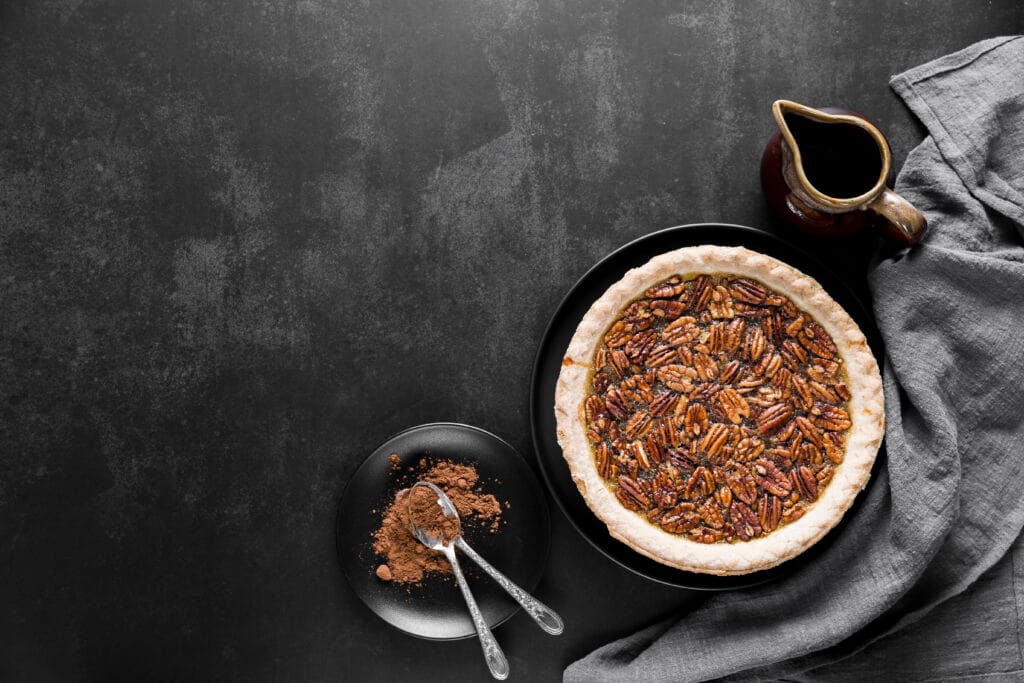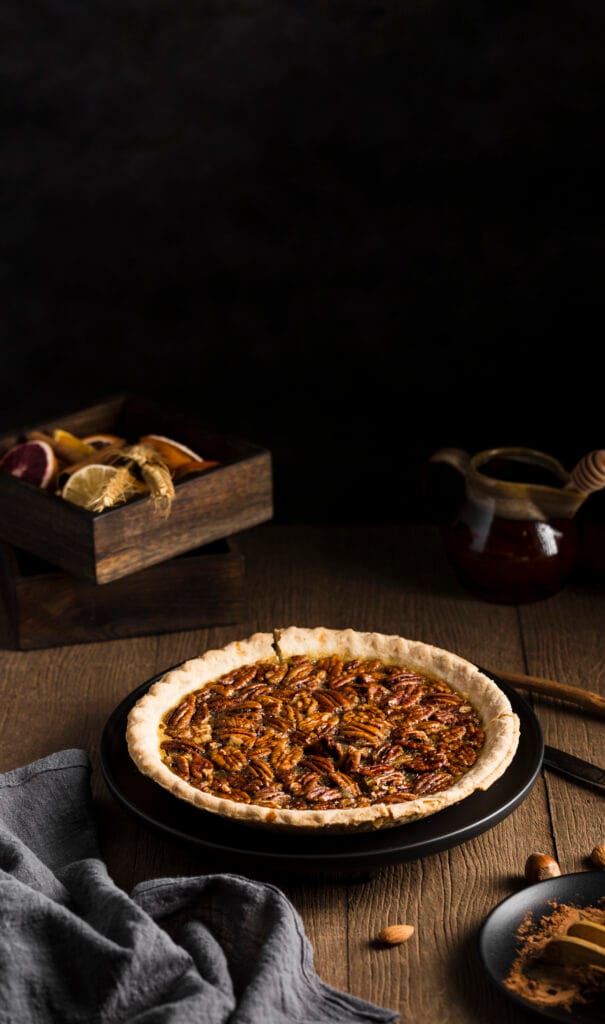Pecan pie warm or cold—which is the best way to serve this classic dessert? Pecan pie is one of the most beloved treats in America, especially during the holidays. With its rich, nutty filling and perfectly flaky crust, it’s no wonder it’s a favorite. However, the debate over whether to serve pecan pie warm or cold continues to divide fans. Some love the gooey indulgence of a warm slice, while others prefer the balanced elegance of a chilled one.
In this article, we’ll explore both sides of the argument, provide expert insights, and share practical tips for serving pecan pie at its absolute best.
Table of Contents
The Origins and Legacy of Pecan Pie
Pecan pie has a long history, dating back to the 1800s. Its origins are tied to the Southern United States, where pecans were abundant and easy to incorporate into recipes. Over time, pecan pie became a holiday staple, often served at Thanksgiving, Christmas, and other celebratory gatherings.
This versatile dessert has evolved to include variations like chocolate pecan pie, bourbon pecan pie, and even recipes like Pecan Pie Dip, which transforms the classic flavors into a party-friendly dish. Despite its many adaptations, one question remains: Is it better warm or cold?
Why Warm Pecan Pie is a Favorite
For many, warm pecan pie is the ultimate comfort food. Its rich filling becomes gooey and indulgent, while the warmth intensifies its nutty aroma. Here are a few reasons why serving pecan pie warm might be the best choice for you.
Enhanced Flavors and Aromas
Heat transforms the flavors of pecan pie. For instance, warming the pie allows the toasted pecans and caramelized sugars to release their aroma, creating a sensory experience that fills the kitchen. Additionally, the filling’s sweetness becomes more pronounced, making each bite deeply satisfying.
Gooey and Indulgent Texture
The texture of a warm pecan pie is often described as luxurious. When heated, the filling becomes gooey and soft, providing a comforting, melt-in-your-mouth experience. This contrasts beautifully with the flaky crust, which remains slightly crisp.
Ideal for Pairing with Ice Cream
Serving pecan pie warm opens the door to pairing it with cold accompaniments like vanilla ice cream. The combination of warm pie and cold ice cream creates a delightful contrast that is hard to resist.

How to Serve Pecan Pie Warm
If you decide to serve pecan pie warm, reheating it correctly is essential. Improper reheating can ruin the texture or even burn the crust. Here are some tips:
- Use the Oven for Best Results
- Preheat your oven to 350°F.
- Place the pie on a baking sheet and cover it loosely with aluminum foil.
- Heat for 10–15 minutes, or until the filling is warm but not overly hot.
- Avoid the Microwave
- While the microwave is faster, it can make the crust soggy. Use it only for small portions and short intervals.
For additional reheating advice, refer to Taste of Home’s article on reheating desserts.
The Case for Chilled Pecan Pie
On the other hand, cold pecan pie has its own devoted fans. Chilling the pie changes its texture and balances its sweetness, making it a more refined choice for some.
Balanced Sweetness
When chilled, the filling’s sweetness is toned down, creating a more balanced dessert. For people who find pecan pie overly rich, serving it cold can make it more palatable.
Firm Texture for Clean Slices
Cold pecan pie firms up, making it easier to slice into neat, presentable portions. This is especially beneficial for gatherings, where a visually appealing dessert is a must.
Convenient Make-Ahead Option
Cold pecan pie can be prepared in advance and stored in the refrigerator. This is particularly useful for hosts who want to reduce stress on the day of their event.
How to Store and Serve Pecan Pie Cold
If you prefer your pecan pie cold, proper storage is essential for maintaining its quality:
- Refrigeration Tips
- Place the pie in an airtight container or wrap it tightly with plastic wrap to prevent it from absorbing fridge odors.
- Refrigerate for up to five days.
- Freezing for Longer Storage
- Cut the pie into individual slices and wrap each one in plastic wrap and aluminum foil.
- Store the slices in a freezer-safe container for up to three months.
- Defrosting Properly
- When ready to serve, defrost slices in the refrigerator overnight or at room temperature for a few hours.
For alternative recipes or adjustments to make your pie more fridge-friendly, check out Corn Syrup Substitutes for Pecan Pie.
Finding the Middle Ground: Room Temperature
If you’re undecided, serving pecan pie at room temperature is an excellent compromise. Letting the pie rest at room temperature for a couple of hours allows it to soften slightly while maintaining its structure. This middle ground balances the gooeyness of a warm pie and the firmness of a cold pie, offering the best of both worlds.
Expert Opinions on Warm vs. Cold
Culinary experts are divided on this topic. Many chefs recommend serving pecan pie warm to enhance its flavors and aroma. On the other hand, bakers often prefer chilled pie for its clean presentation and make-ahead convenience.
Interestingly, recent trends have also led to creative uses of pecan pie flavors. For example, exploring What Flavor Pairs Well with Pecan reveals unique pairings like coffee, chocolate, and even savory spices.
Frequently Asked Questions (FAQs)
What is the best way to reheat pecan pie?
The oven is the best option for reheating. Preheat it to 350°F and heat the pie for 10–15 minutes. Covering it loosely with foil prevents the crust from burning.
Can pecan pie be left out overnight?
No. Pecan pie contains eggs and butter, which require refrigeration after cooling. Leaving it out overnight may lead to spoilage.
Does serving temperature affect pecan pie’s taste?
Yes! Warm pecan pie enhances the buttery and nutty flavors, while cold pie balances sweetness and provides a firmer texture. The serving temperature significantly impacts the overall experience.
How do I fix a runny pecan pie?
If your pecan pie filling is too liquid, it may need additional baking time. For troubleshooting tips, check out Why the Middle of Pecan Pie is Still Liquid.
Practical Tips for Every Preference
Whether you prefer warm, cold, or room-temperature pecan pie, here are some practical tips to ensure your dessert is perfect:
- Warm Pie: Use an oven for reheating and serve immediately with toppings like ice cream or whipped cream.
- Cold Pie: Refrigerate in an airtight container and serve chilled with coffee or tea for balance.
- Room-Temperature Pie: Let the pie sit for two hours before serving, especially if it was stored in the fridge.
Conclusion: Warm or Cold?
Ultimately, the choice of serving pecan pie warm or cold comes down to personal preference. Warm pecan pie is gooey, indulgent, and perfect for pairing with ice cream, while cold pecan pie offers a balanced sweetness and clean presentation. For those who can’t decide, room temperature provides a harmonious compromise.
Experiment with serving temperatures to discover what works best for you and your guests. Whether you prefer it warm, cold, or somewhere in between, pecan pie remains a timeless dessert that’s as versatile as it is delicious.


